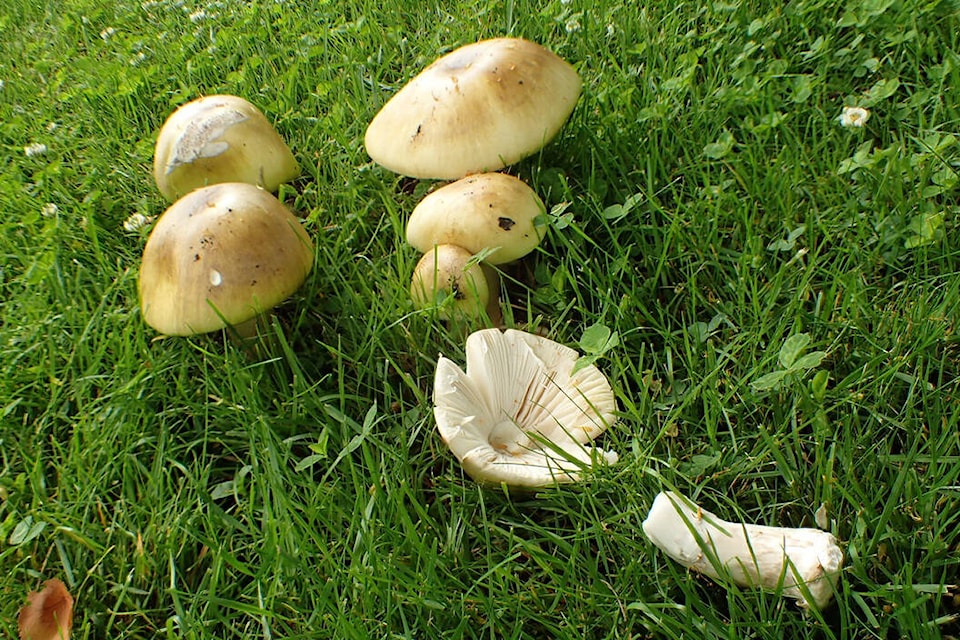Death cap mushrooms are popping up on the south Island prompting a Greater Victoria municipality to renew its annual warning “don’t eat anything you can’t identify.”
Amanita phalloides, which appeared in July last year in the community, can lead to severe illness or death if ingested and are especially dangerous for children and pets.
“They can look like other mushrooms,” warns Oak Bay Parks Manager Chris Hyde-Lay. “Our concern is how poisonous they are, we want people to be aware to make 1,000 per cent sure you know what you’re picking if you decide to eat them.”
A Victoria three-year-old died after ingesting a death cap mushroom in 2016 when it was mistaken for an Asian paddy straw mushroom, a cultivated edible species. Death caps can also look like immature puffball mushrooms. In 2003 a B.C. adult nearly died after mistaking a death cap for an immature puffball mushroom.
A dry summer held the mushrooms at bay, but promptly after the first rains of summer, parks staff started spotting the death caps cropping up.
“They are out in abundance right now for sure,” Hyde-Lay said.
Parks staff remove the toxic mushrooms when found on municipal property and warn residents to be watchful on private land.
The toxic fungus is known to grow across the south Island, Vancouver and the Fraser Valley due to the number of host trees and prime climate. Death caps typically grow under various species of imported trees such as birch, hazelnut, hornbeam, beech, linden, sweet chestnut and oak. Because the trees are hosts, the mushrooms come back every year unless the host tree is removed.
Death caps are pale and yellowish in colour with a large cap and skirting underneath. They often have a sweet, honey-like smell and grow in irrigated areas with host trees.
To remove death cap mushrooms, the B.C. Centre for Disease Control and Poison Control Centre suggests wearing gloves and washing hands thoroughly afterward. The mushrooms should be put in the garbage or municipal compost as household compost may not reach temperatures required to inactivate spores. Mowing will not get rid of the fungus as most of it lives underground.
Anyone who may have ingested a poisonous mushroom should go to the nearest hospital or call 911 or the Poison Information Centre at 1-800-567-8911. Try to keep a sample of the mushroom for testing.
For more information visit the B.C. Centre for Disease Control and Poison Control Centre at .



